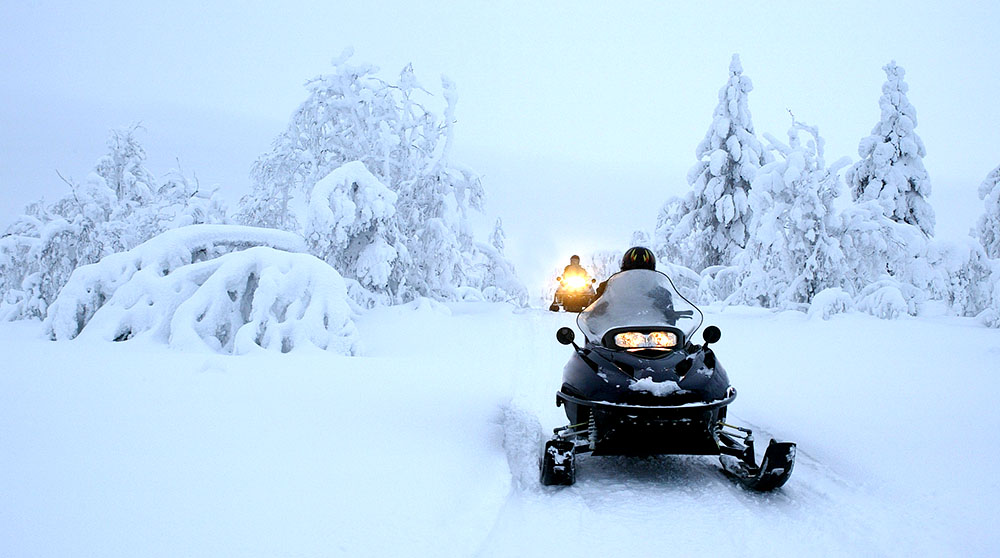Snowmobile Safety: 15 safety tips to know

Did you know? There are over 230,000 miles of snowmobile trails in the U.S. and Canada combined. As the snow starts to fall, riders start preparing for a busy season on the trails. But before you pack up and head out, it’s important to put snowmobile safety first.
Gear up for snowmobile season with these 15 snowmobile safety tips:
Take a snowmobile safety course. Brush up on the rules of the trails to keep yourself and other riders safe. Learn important hand signals, the meaning of trail signs, how to operate your machine, avoiding hazards, and more.
Follow the service schedule. Make sure your snowmobile is serviced and ready before you ride. Stay on top of routine repairs and maintenance like checking the chain case oil, battery, headlights, and brake pads.
Have a helmet. Find one that meets the U.S. Department of Transportation’s standards and fits you properly, not too loose or too tight. Wear it every time you ride.
Dress the part. Gear up with winter layers, warm gloves, waterproof boots, and a windproof jacket. If your helmet does not have a shield, consider wearing anti-fog snowmobile goggles to protect your eyes and help you see clearly.
Watch the weather. To use your snowmobile, you need snow and cold… just not too much of either one. Be aware of storms, blizzards, and other looming weather conditions.
Take your smartphone. Should you have an emergency or get lost on the ride, you can use it to call for help and share your coordinates.
Stick to the speed limit. If there is a posted speed limit, follow it. Otherwise, keep speeds reasonable enough to give yourself time to respond to terrain changes, other riders, obstacles, and animal encounters. A safe speed to travel by snowmobile, especially at night, is around 40 mph.
Keep your lights on. If you’re riding during or after snowfall, brush snow off of your headlights so you can see and be seen.
Scout your route. Always review the route beforehand and watch where you’re riding. Look out for obstacles like tree stumps, fences, ditches, and low-hanging wires.
Stay off the streets. Marked snowmobile trails are the safest spots to ride.
Avoid riding on frozen lakes and rivers. Bodies of water that appear frozen may not be solid enough to support the weight of your vehicle all the way to the other side. If you don’t know that a lake or river is approved for riding, don’t cross it.
Don’t drink and ride. Not only does alcohol slow your reaction time and alter your perception, it also makes you more vulnerable to hypothermia.
Ride with others. Stay safer by riding with a passenger and/or a group. Should your snowmobile break down or get stuck in the snow, another set of hands and machines can come in handy.
Alert others as to where you are going. If you’re riding alone, tell someone where you’ll be riding and when they should expect you to return.
Insure your snowmobile. If something happened to your snowmobile, or perhaps you injured someone or damaged property, your insurance can help protect you from financial burden.
Unsure if you have the coverage you need? Talk to one of our local, independent agents.







